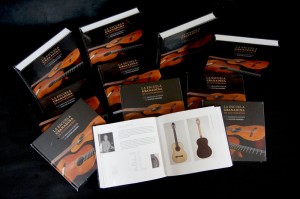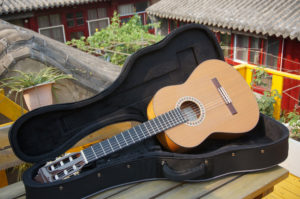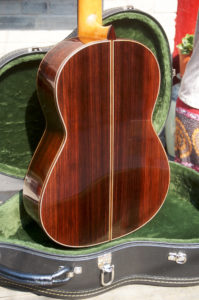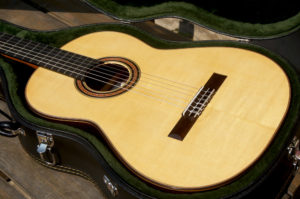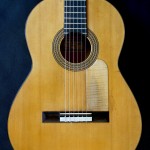过去两个世纪以来,西班牙吉他在全世界迅速流行起来,爱好者数量巨大。
纵览它的历史,我们可以了解到它是如何发展到了今天。由于必须适应音乐和演奏者,吉他制作上的改变总是能够暗示潮流的指向。
审视传统的吉他,它现在的形制是由安东尼奥·托雷斯(Antonio de Torres)在十九世纪中期确立的。
不用的演奏技术可以用来明确分辨古典吉他和弗拉门戈吉他。
对于古典或弗拉门戈的声音,决定性的因素无疑是演奏者。两种流派最直观的区别就是其持琴和演奏的姿势不一样。基于不同的拨弦方法,产生了不同的音色变化,使得乐器本身也根据音乐需要发展出相应的技术。
吉他在弗拉门戈音乐中的使用已经有很长的历史了。虽然,并没有明确的证据说明弗拉门戈吉他在什么时候和其他形式的西班牙吉他有了区分。从吉他制作的历史上看,弗拉门戈吉他也是基于同样的基本形制,只是更加简洁质朴,没有那么华丽。
在十九世纪,在弗拉门戈的练习中,通常会使用最便宜的乐器。这样的吉他会使用便宜的、本地的木料,尤其是会选用常绿柏木制作背侧板,这最终使之成为了弗拉门戈吉他的制作标准。在同样的思路下,包括弦轴、旋钮也是很廉价的。
在弗拉门戈吉他上会使用比较低的琴桥。这可能源自日常演奏技术的需求,避免左手换弦的过程花费太多时间。比较低的琴桥可以扩大琴弦在琴桥、弦枕处的角度,减小压力。如果你了解十九世纪所使用的羊肠弦,就会知道这一点非常重要,它可以有效降低琴弦崩断的风险,延长使用寿命。
由于琴桥较低,弗拉门戈吉他上的演奏位置也要低于古典吉他。这种较低的演奏位置有利于一些弗拉门戈技术的实现,比如在面板上用指甲进行敲击。为了防止这种演奏技术伤及柔软的面板木料,一般会使用较硬的保护性木片(后来换成了塑料片)粘贴在琴桥的前面。
在传统上,弗拉门戈吉他比古典吉他的重量要轻,这一特点今天仍在继续。不仅是因为它使用密度较小的木料,也在于很多尺寸的缩减,例如侧板的宽度,琴颈的厚度等等。其结果就是更加瘦小轻盈的吉他,重量大约1公斤,一般的古典吉他重量为1.5公斤。
轻结构的问题在于比较容易损坏,对保存环境要求较高。这也就是为什么鲜有早期的弗拉门戈吉他能够流传下来。
弦长的增加(达到655毫米、660毫米、664毫米乃至更长)使得弗拉门戈吉他的琴弦震动更具动感和冲击力。它使得琴弦的张力和硬度增加。
一个很重要的观察角度是拨弦的方式以及面板共鸣的方式。不同的拨弦方式会带来不同的振动传播模式,从而导致音质的不同。事实上,拨弦的位置越接近琴弦两端,越会激发高频振动,增加泛音序列中的高频成份。
这也需要弹得更有力量,例如弗拉门戈吉他中的轮扫技术,用指甲快速击弦。
在二十世纪六十年代之后,尤其是帕科·迪·路西亚(Paco de Lucia)成名之后,玫瑰木在弗拉门戈吉他背侧板上的应用越来越普遍。
弗拉门戈所使用的是来自巴西或里约的玫瑰木。由于听众越来越多,艺术家在追求更大音梁和新的音色的过程中发现了它。很多弗拉门戈吉他演奏家在独奏表演中使用玫瑰木吉他,而在给歌舞伴奏的时候使用柏木吉他。
无论吉他是用来演奏古典还是弗拉门戈音乐,总体上它的材料是一样的(背侧板除外)。一般来说,面板由云杉或松木制成,乌木指板,松木琴颈,玫瑰木琴桥和包边已成为一种标准。木料的选择已经成为乐器质量的决定性因素,它标志着乐器的档次。
木材必须在理想的环境下生长,包括海拔和温度。它也必须经过充分干燥,以防变形。
另一个区别在于,古典吉他的声音通常是比较干净的,而弗拉门戈吉他则会把一种嗡嗡或有些嘶哑的声音作为魅力之一。此外,弗拉门戈吉他的声音和反应必须是弗拉门戈吉他手所喜爱的,它的声音有一种独特的个性,任何对这种灵魂声音的威胁都是不可接受的。
一把高品质的吉他,不管是古典还是弗拉门戈,必须有非常出众的音质;清晰、易分辨的音色,持续的回响,力量、爆发力,等等。弗拉门戈吉他更需要击弦的锐利和速度,辉煌而带有金属味的声音;古典吉他则需要纯美的音色,宽广的动态,有力而持续性强的低音和充分的泛音序列。
在设计中,材料和工艺必须搭配得当。这意味着吉他制作者必须通晓结构原理,通过经验建立起良好的均衡感和自然直觉,这样才能做成一把期待中的吉他。
马里奥·阿拉卡玛(Mario Aracama),2013.6
(本文专为Jitamen.com撰写)
_______________
传记
由于痴迷于音乐和木头,
在研究了大师们的作品之后,我在2003年移居格拉纳达,
在这个标志性的艺术圣地,我从像安东尼奥·马林·蒙代罗(Antonio Marin Montero)、米切尔·里彻(Michael Ritchie)等等这样的大师身上学到了热情、
Mario Aracama
Mario Aracama -Biography-
Captivated by music and wood, I began making guitars in the late nineties in England, graduating with BA (honors) degree in Musical Instrument Technology at the London Guildhall University.
After studying the works of great masters, I moved to Granada in 2003 to continue working and investigating in the most traditional and romantic line of guitar craftsmanship.
It is in the emblematic location of the art, where I have learned, through enthusiasm and dedication, traditional techniques from the hands of makers like Antonio Marin Montero or Michael Ritchie, amongst others.
– Granada Guitar Maker Mario Aracama writes about
Classical and Flamenco Guitar Differences –
During the last two centuries, the spanish guitar has achieved enormous popularity and has flourished throughout the world.
Through the analysis of its history we can learn how it has developed overtime, since guitarmaking has always indicated trends by changing to adapt to its music and players.
Looking at the traditional guitar, its present evolution is based on the principle foundations established by Antonio de Torres in the mid 19th century.
Different playing techniques can be identified to make a comparative analysis of both classical and flamenco playing.
The determinant element in a classical or flamenco sound is without doubt the guitarist. The first thing we can notice is that in both genres, the guitar is handled in different postures. Depending on the technichal approach to the strings, that define and acentuate the sound, it will vary, letting the instrument itself develop certain techniques in relation to the music.
The guitar has long been used in flamenco music. Although there is not clear evidence indicating a distinction between the flamenco guitar and any other type of spanish guitar, a historic review on guitar making leads us to think that the flamenco guitar was a version of the same basic instrument, just a simpler and less ornate guitar.
In the 19th century, the cheapest instruments were commonly used for flamenco practice. It led to the selection of less expensive, domestic-local woods, in particular Cypress (Cypress sempervirens) for the back & sides, which gradually became accepted as a standard material for flamenco guitars. The same principle was applied to the use of inexpensive tuning pegs.
The regular use of a lower bridge became common amongst flamenco guitars. It might have evolved due to the demand of playing technique searching for commodity, as well as to prevent the cost of string replacement. A low bridge along a flatter neck angle creates a less acute angle at the point of string bridge-saddle contact. It is important to notice the quality of gut strings used on those 19th century guitars to resolve the problem of string breakage and prolong their life use.
The low bridge leads us to a lower action than found on guitars used to play classical music. A low string action facilitates flamenco playing technique, which requires the use of strokes on the top with the fingernails. To prevent damage on the soft wood from these percussive playing techniques, it became common to use a protective hardwood plate (which further on was replaced by a plastic plate) glued to the guitar top just in front of the bridge position.
Flamenco guitars tended to be lighter in weight than classical guitars. And so it continues today, not only by using less dense materials but also by reducing certain measurements like the height of the sides, the neck, thinning, etc. It all resulted in a somewhat thinner, slightly smaller and noticebly lighter guitar, weighing around 1 kg, while a classical stands around 1.5 kg.
The problem with light weight construction is that fragile woods can only survive in a well protected environment. This might be the cause of the low rate of early surviving flamenco guitars.
The increase of the string length (being 655 mm, 660 , 664, or more) might benefit flamenco guitarists with quite a strong pulsation to the strings. It endowes more tension and rigidity to the strings.
An important observation is to look at the way the plucked string vibrates. Different plucked positions create different sets of frequencies distributing energy among the modes of vibration, resulting in different types of timbre textures. In fact, the more a string is plucked towards one end the more favoured the highest modes of vibration are, arising the higher harmonics on the harmonic series.
It also needs to be plucked harder, which is the case for flamenco ¨rasgueado¨ technique where nails hit the strings rapidly.
After the 1960´s, especially after the emergence of the Paco de Lucia figure, rosewood back & sides on flamenco guitars became more common.
The flamenco nigra comes from the latin denomination of the Brazilian or Rio rosewood (Dalbergia Nigra). It might have emerged in the search for louder instruments demanded by large audiences as well as the search for new sounds by the artists. Many flamenco guitarists play rosewood guitars for solo performance while using cypress guitars for the accompaniment to the singing and dancing ( cante y baile).
Either guitars made to play classical or flamenco music are generally made by the same materials (except for back & sides). The regular use of spruce or cedar tops, ebony fingerboards, cedar necks, rosewood binding and bridge has become a standard. The choice of wood becomes the determining factor for the quality of the instrument, since it can only be as good as the timber selected.
The timber must have grown in ideal circumstances relating to altitude and temperature and it must have been well air-dried to prevent wood deformation.
Another distinctive element is that while in classical guitars the sound must come out clear, in flamenco guitars some buzzing is generally accepted as an enchanted feature of its hoarse voice. Moreover, a flamenco guitar should sound and respond in a way that flamenco guitarists like, because the soul of its sound has a unique character so that anything threatening its purity is totally unacceptable.
A great guitar, being either classical or flamenco must posses great qualities of sound; clarity and separation of voices, eveness of response, power, projection, etc. While the flamenco guitar has a certain sharpness and speed to the attack of the string, a brilliant almost metallic sound, the classical guitar is characterised by its beauty of tone with large tonal and dynamic range, sustain and a strong fundamental well defined by harmonic overtones.
Materials and craftmanship must be applied to a suitable design. This means the guitar maker´s knowledge of construction principles, building up a sense of proportion and natural intuition gained through experience, to create the desired guitar.
Mario Aracama. 2013.06
(Article wrote for www.jitamen.com)

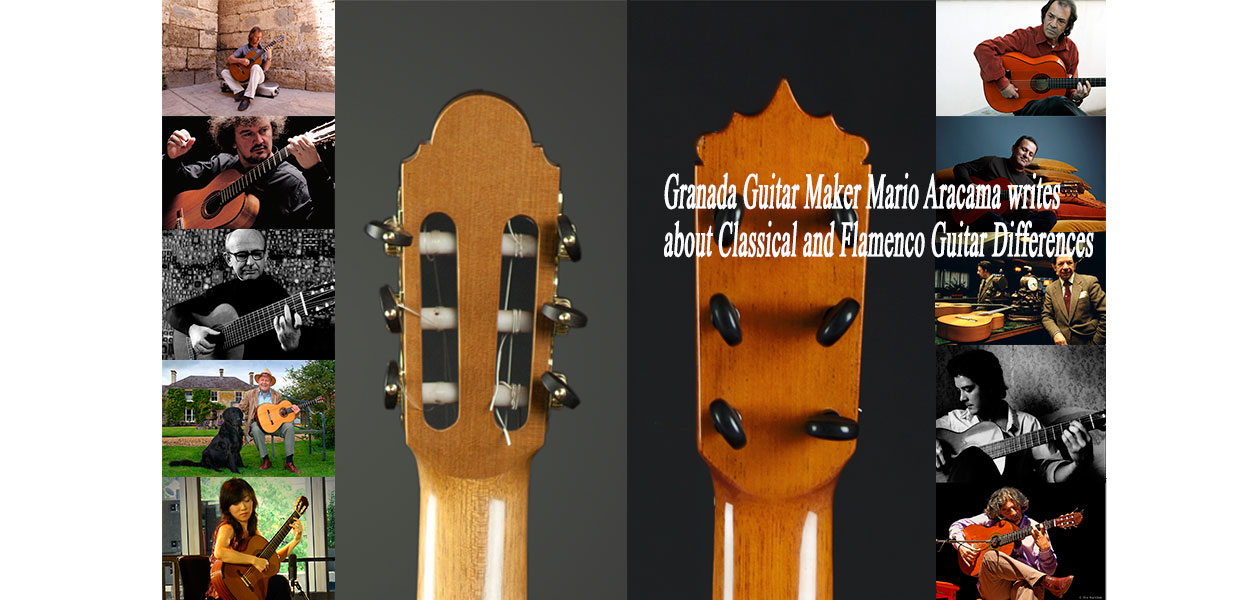
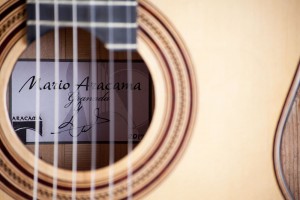
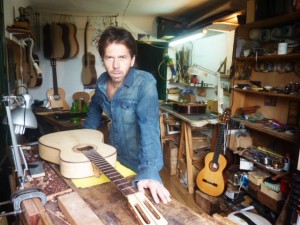
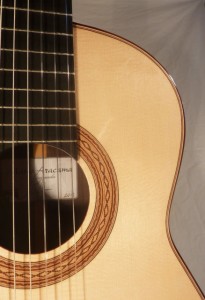

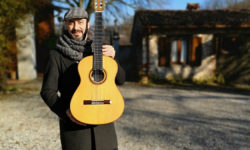
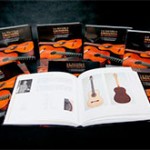
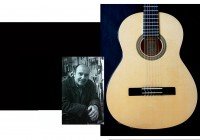
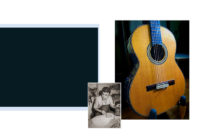


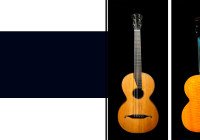
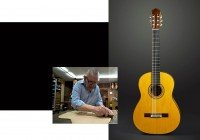
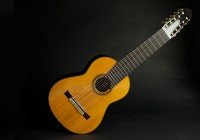
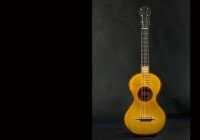

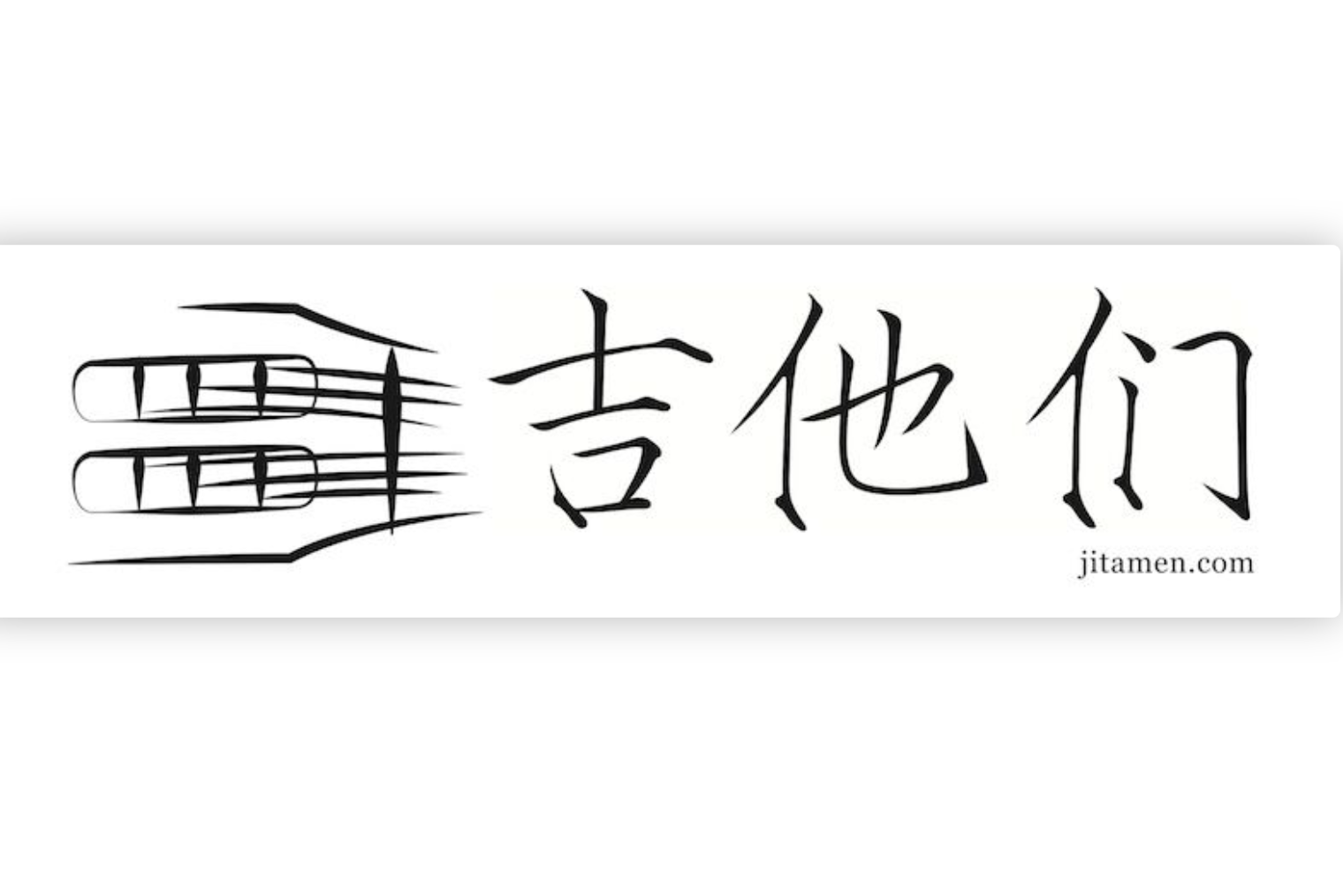 吉他们 JITAMEN.COM 现在在北京出售的琴
www.jitamen.com/jitamenguitars/
吉他们 JITAMEN.COM 现在在北京出售的琴
www.jitamen.com/jitamenguitars/